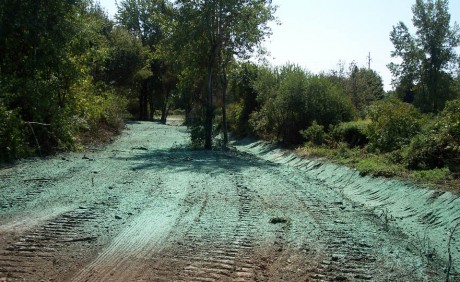 One of the biggest problems with soil is its ability to move. Through the “Critical Area Seeding” program there are many ways and opportunities to provide security and stability to stream banks, road banks, ditching, and new construction areas.
One of the biggest problems with soil is its ability to move. Through the “Critical Area Seeding” program there are many ways and opportunities to provide security and stability to stream banks, road banks, ditching, and new construction areas.
Technologies such as: hydroseeding, seeding & bale mulching, natural riparian stabilization, and technical design for storm water and high flow situations can help to establish a good foundation to minimize soil transport and maximize soil health.
The District offers two forms of Critical Area Seeding for municipalities, agricultural non-point source projects and community groups at this time.
All services available for Municipal related projects, Public Health and Safety Concerns and Technical Assistance. Please Chris Hotto, Chris@WayneNYswcd.org for more information.
Hydrdoseeding is the technique of applying a slurry of water, seed, fertilizer, and often a tackifier to topsoil. A tank equipped with a special pump and continuous agitation system is used to spray the slurry. It is a fast, cost effective way to protect from erosion from rain or wind impact. With it’s ability to retain up to 10 times its weight in water, hydroseeding has proved to be the best method for fast, healthy germination, high plant survival and protection of seeds.
One method of non-chemical weed control is to mulch heavily between rows of fruits and vegetables with hay or straw. Breaking down and spreading square bales is too labor intensive for many growers. Large round bales of hay or straw are better suited for mulching because they can be unrolled into layers that are the proper thickness for mulch. Mulching conserves water by allowing less water to evaporate from the soil and prevents soil erosion.
Natural riparian areas are the vegetated areas adjacent to a flowing body of water. Healthy riparian areas protect water quality by capturing, storing, and treating water through their soils before it gets to streams. Riparian areas with a diversity of plant species are most effective in slowing the flow of water and storing it for future use. The diversity of plants work together to hold streambank soils in place, protect them from erosion, and provide structural support.
